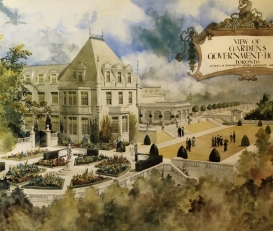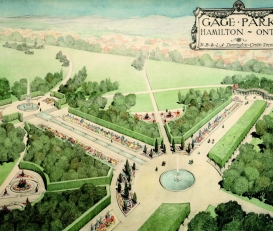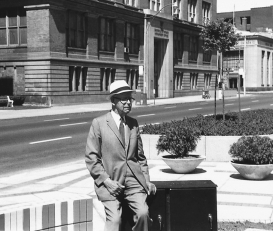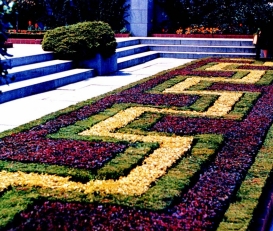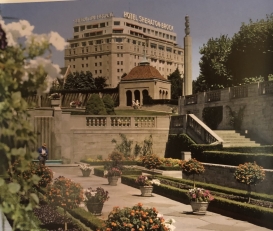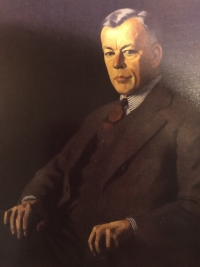
Howard Grubb, who has often been called the father of landscape architecture in Canada, was a tall Yorkshireman who came to America to earn his Agriculture degree from Cornell University in 1908. Determined to land a job with Thomas A. Mawson, one of England’s best known landscape architects, he worked his way back to England on a cattle boat.
Within two years he was in charge of the London office, and with Mawson, fortuitously attended a lecture given by a “rising lady landscape architect,” Lorrie Alfreda Dunington. The two married, combined their surnames and immigrated to Canada where, after a cross-Canada honeymoon, they opened a Toronto office, H.B. & L.A. Dunington-Grubb, Landscape Architects. By 1913, to “overcome the utter lack of ornamental plant material,” they had purchased a hundred acres of land in Sheridan, Ontario, and hired Scandinavian horticulturist Herman Stensson to run Sheridan Nurseries.
The Dunington-Grubbs created some of the most notable gardens of the period, designing scores of private estates (Parkwood in Oshawa, Uplands and Caruthers Estates in Toronto), major residential projects (Garden Court Apartments and Lawrence Park in Toronto), and working on legendary public gardens (Hamilton’s Gage Park and McMaster University’s Entrance Park and Sunken Garden.) Their style, said fellow CSLA founder Humphrey Carver, was classic and aristocratic, with broad terraces and steps, topiary hedges, sculptures, vistas, and an “Art Deco” sensibility.
Both Dunington-Grubbs were prolific writers and lecturers, socially active and socially conscious. In the mid-1930s, Herman Stensson’s son, Jesse Vilhelm (“Bill”) Stensson, joined the partnership. In 1934, the three were among the nine founding members of the Canadian Society of Landscape Architects and Town Planners (now the CSLA). Howard served as its president in 1934-1935 and again in 1944-1945.
Although J.V. Stensson devoted more of his time to Sheridan Nurseries over the decades, the close association continued, and after Lorrie’s death in 1945, Howard and J.V. continued to do landmark work, such as Niagara’s Oakes Garden Theatre and Rainbow Bridge and Toronto’s University Avenue in the modernist style.
Over the years, Dunington-Grubb received a great many honours from architects, landscape contractors, shade tree associations, nursery trades, and more. He was named a fellow of the CSLA in 1964, the year the program was established.
Humphrey Carver, a fellow founding member of the CSLA, enjoyed telling stories of spirited debates with his friend Dunington-Grubb.
In Linda LeGeyt’s Oral Histories, Carver remembers telling Dunington-Grubb that his gardens were places “entirely removed from the realities of 1930s life in Canada,” and that he was “a kind of leprechaun who put stardust into your eyes and the real world is transformed into a Midsummer Night’s Dream.” Grubb snorted and replied, “That’s the whole point. In a garden we have left the real world and entered the world… of pleasure and rest".
For short descriptions of selected projects, the CSLA recommends The Cultural Landscape Foundation’s website:
Garden Court Apartments - Toronto
